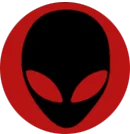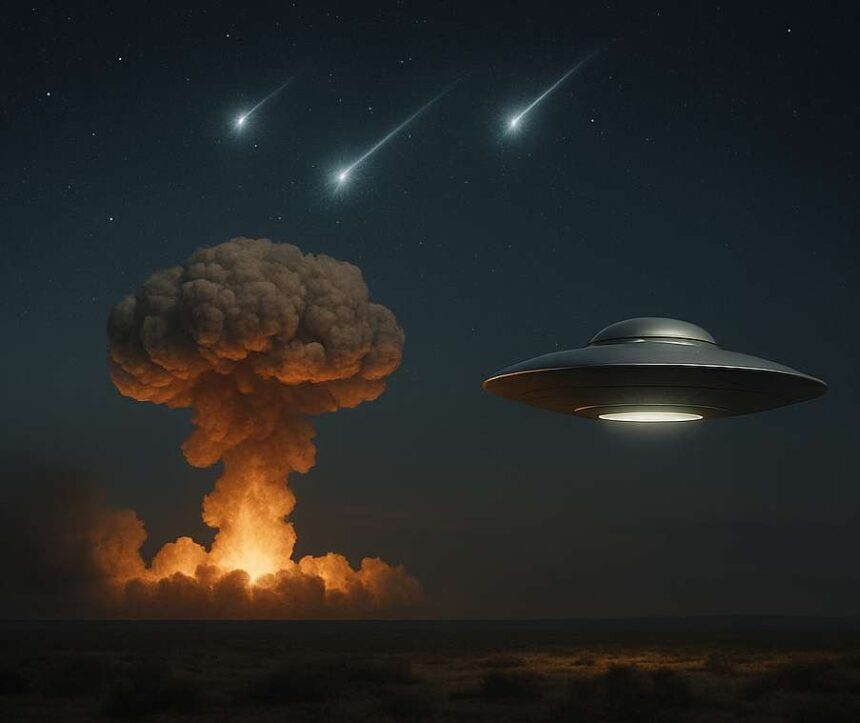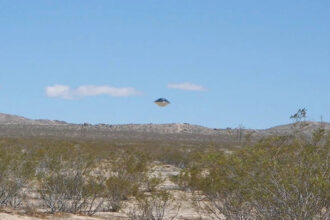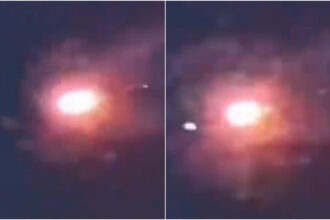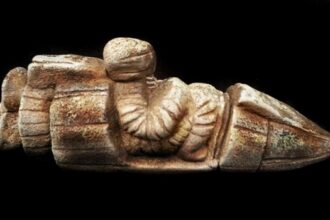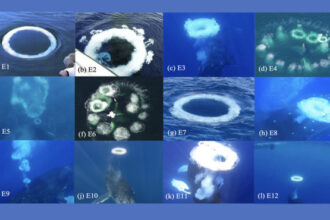A new study conducted by astronomers Stephen Bruehl and Beatriz Villarroel has identified a possible connection between nuclear tests carried out during the Cold War, unexplained astronomical phenomena, and the global rise in UFO sightings. The research analyzed sky images taken between 1949 and 1957 by the Palomar Observatory—a period marked by intense nuclear activity by the United States, the Soviet Union, and the United Kingdom.
During the investigation, the scientists identified occurrences of “transients”—light sources that appear and disappear suddenly—with a 45% higher frequency on or near days of atomic testing. In addition, a significant increase in these phenomena was observed on dates that coincided with spikes in reports of unidentified flying objects.
The analyzed images come from the POSS-I (Palomar Observatory Sky Survey), one of the most detailed astronomical records of the 20th century. According to the authors, these temporary luminous events may be linked to secondary effects of nuclear explosions, such as the emission of Cherenkov radiation, which is known to produce blue flashes in atmospheric or aquatic environments.
The most striking case mentioned in the study occurred in July 1952. Three luminous points appeared and vanished within an hour in a single image captured on photographic plates. The date coincides with one of the largest waves of UFO sightings ever recorded, including sightings over the U.S. capital, Washington, D.C.
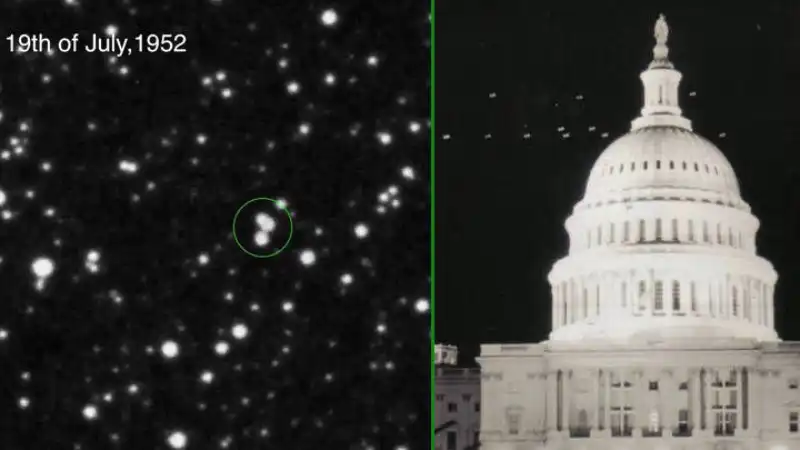
Another relevant finding of the research is the recurrence of transients near nuclear facilities and military testing areas—precisely where metallic objects flying at high altitudes have also been reported. These patterns suggest that some of the phenomena may be associated with physical objects in orbit or in the upper layers of the atmosphere.
Although the study avoids claiming any direct causal relationship, the authors argue that the statistical coincidences are strong enough to justify more in-depth scientific investigations into the phenomenon—especially in light of the official reclassification of many of these sightings as “unidentified anomalous phenomena” (UAPs).
The research, available on the Research Square platform, contributes to a more empirical approach to the UFO debate, which until now has been dominated by subjective reports and speculation.

